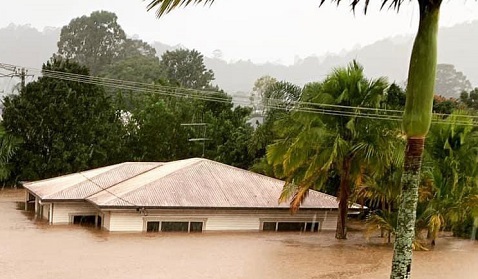One in 25 properties in Australia will be effectively uninsurable by 2030 because of worsening extreme weather, a new Climate Council study says.
The federal Victorian electorate of Nicholls has the highest number of properties – around 26,000 or nearly 27 percent of total numbers – considered to be at high risk of being uninsurable by 2030.
In the seat of Richmond on the NSW North Coast, 20 percent of properties are considered high-risk.
Flooding from rivers was found to be the most common risk to properties, followed by bushfires and then coastal inundation from rising sea levels.
The Climate Council study analysed the impacts of climate hazards on 14 million Australian addresses to inform a national risk map showing the physical risk extreme weather and climate change poses to homes around the country over the next decade and into the future.
Along with the 520,000 properties to become effectively uninsurable by 2030, a further one in 10 will reach the “medium risk” classification by 2030, with annual average damage costs equalling 0.2 percent or more of the property replacement cost.
Climate Council chief executive Amanda McKenzie said the data showed the scale of the impact that is occurring in Australia right now and “how quickly things are changing”.
“Over the past eight years, the Federal Government has failed to meaningfully tackle climate change or prepare Australians for the worsening extreme weather events that we are now experiencing,” Ms McKenzie said.
The findings were evidence that a comprehensive risk assessment needed to be undertaken of the most vulnerable communities, and that state and federal governments must consider policies to help some people to move, she said.
The Australian Local Government Association (ALGA) has consistently called for a targeted disaster mitigation program of $200 million per annum for four years to reduce the costs of response and recovery and strengthen community resilience.
It’s also calling for a Local Government Climate Response Partnership Fund of $200 million over four years to enable planning and preparation to minimise the impacts of climate change in local communities and enable councils to achieve climate neutrality as soon as practicable.



